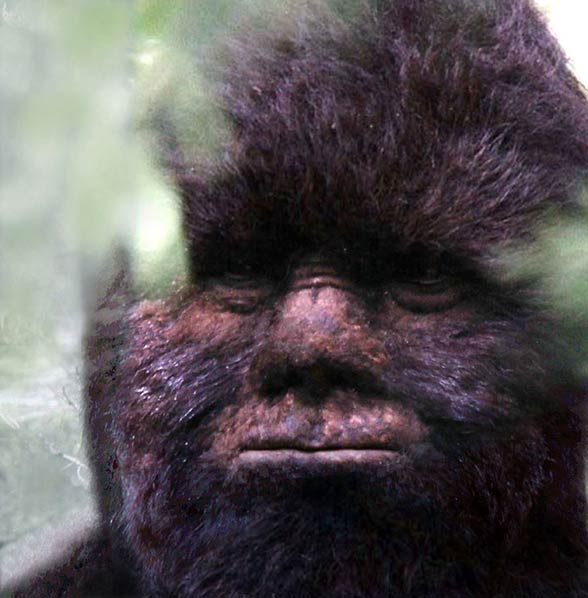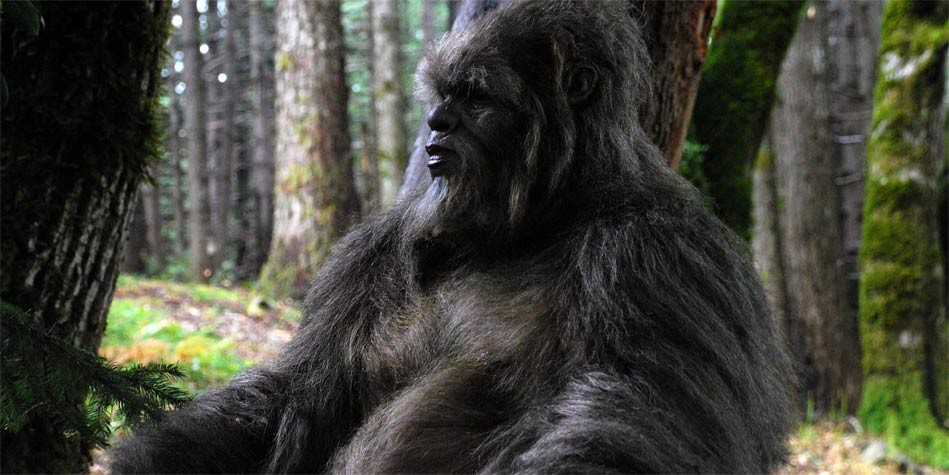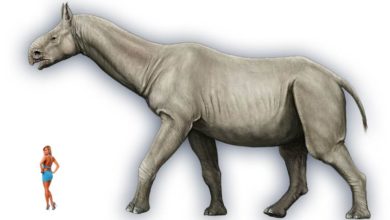Bigfoot – does it exist?
Stubborn scientists have claimed for years that Bigfoot, just as the Yeti and Yowie, is a creation of people with a rich imagination. In 1996, a zoologist, John Crane, wrote in his article that “there was no such thing like Bigfoot.” He, similarly to many other skeptics, doesn’t believe that a creature like Bigfoot can exist on our planet. So, what should we think about tens or maybe hundreds of reports on the large ape-man?
We’re going to encounter a mysterious animal whose existence has been questioned among scientific circles, but considered to be obvious by North American people.
Basic information
- Status: cryptid
- Possible occurrence: North America, mainly Pacific Northwest
- Habitats: mountains, forests
- Other names: Sasquatch

Characteristics
Appearance
If you heard about the Yeti and Yowie, you will certainly be able to imagine Bigfoot. All these 3 “species” are enormous hominids walking on two legs (bipedal). Their bodies are covered with dense, dark brown or reddish hair. Our main character is 2-3 m (6.5-9.8 ft) tall and weighs 230 kg (507 lb). According to reports of witnesses, it has big eyes, a prominent brow ridge, and a high “crest” along the midline of the top of the skull.
Bigfoot has been described as a strong creature that exudes bad smell. It leaves very large footprints, about 60 cm (23.6 in) long and 20 cm (7.9 in) wide. The number of toes is also extraordinary (because it’s irregular). There have been footprints with from 2 to even 6 toes. Some of them have had claw prints. However, it is suspected that this kind of tracks rather belong to the bear. Moreover, Bigfoot hunters claim that this animal is omnivorous and nocturnal.

First reports
Stories about the hairy humanoid from North America have been known for ages by indigenous people of the Pacific Northeast. Legends about it had existed even before the name Bigfoot emerged. Descriptions of its appearance differed, however, depending on the region, or even a family from the same community. Members of the Lummi told stories about, for example, Ts’emekwes – the counterpart of Bigfoot. Other stories described evil creatures, such as Stiyaha or Kwi-kwiyai. They were nocturnal, so it was forbidden for children to say their names out loud, because these monsters were eavesdropping people in order to kidnap them later.
In 1847, a man called Paul Kane heard from the locals a legend about Skookum – cannibalistic ape-men living on the peak of Mount St. Helens volcano.
The Indians from Spokane (Washington) told a protestant missionary stories about a less dangerous animal than Skookum in 1840. According to the Native Americans, these creatures were enormous, lived in surrounding mountains, and stole salmons from fishnets.
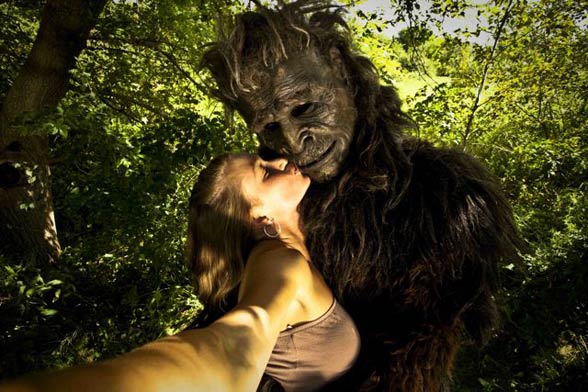
Does Sasquatch exist?
Stories about Bigfoot-like creatures were told also by the Chehalis people from Canada. According to them, Sasquatch is a real creature, not legendary, therefore, they felt offended when someone took their stories for fairytales. These people said that Sasquatch avoided white men and spoke in st’át’imcets language, used by the St’at’imc people from Canada. These stories have been collected in a series of articles by Burns, who popularized the name Sasquatch in eastern Canada before it became popular in the USA.
Each American Indian language had its own term for Bigfoot. Many peoples used words translated today as “wild man” or “hairy man”. However, some names were associated with the creature’s behavior, for example “eating clams.”
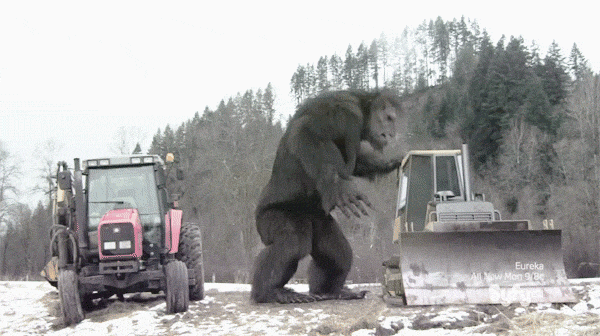
Bigfoot today
About 1/3 of reports on sightings of Bigfoot come from the Pacific Northwest. The rest of the reports come from several other regions of North America. Some Bigfoot believers, such as John Willison Green, believe that these creatures live in all regions of the world, except for Antarctica.
There have been several more interesting reports on Bigfoot noted so far. The most recent comes from 2007. Rick Jacobs recorded the image of Bigfoot with a camera attached to a tree. The Pennsylvania Game Commission predicated, however, that the hunter captured the image of a bear suffering from severe mange – a parasitic skin disease leading to fur loss (oh, these scientists, they have to ruin everything, hmm…).
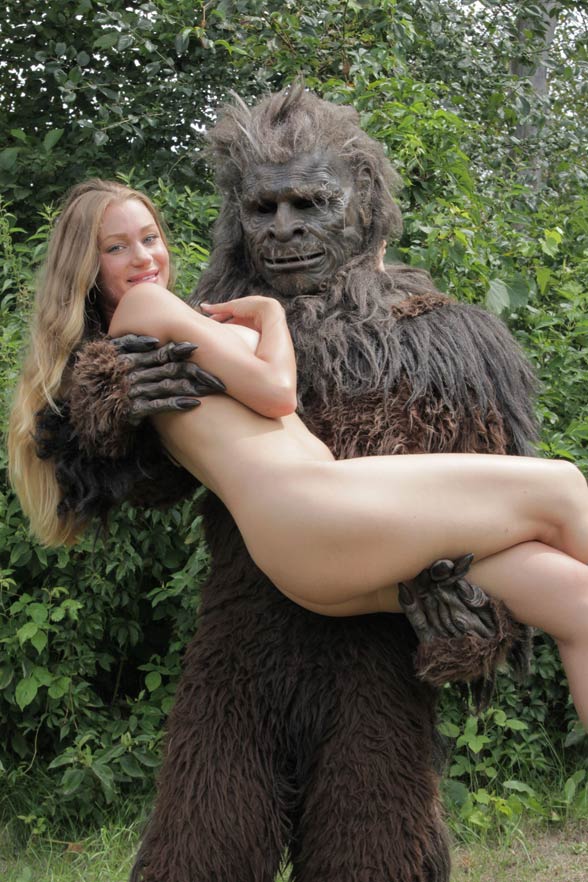
Kidnapping by Bigfoot?
One of the first and at the same time most incredible modern stories about the existence of Bigfoot comes from 1924. Albert Ostman, a Canadian prospector, claimed that he was kidnapped by Bigfoot that exact year. The animal kept him in British Columbia for 6 days. Ostman claimed that the creature took him at night, when he was sleeping. After he woke up he saw a family of ape-men consisting of 4 members: 3 adults and 1 baby.
Ostman didn’t have to use his gun, because the animals didn’t want to hurt him. The Canadian claimed that they gave him sweet grass to eat. After about a week he decided to escape – he gave the largest, 2.5 m (8.2 ft) tall male tobacco to eat, and it intoxicated him effectively. The man didn’t speak about his adventure for the following 24 years, fearing that people would consider him to be crazy.
Only in 1954, when stories about Bigfoot started to appear in newspapers, Ostman decided to tell about what had happened to him.
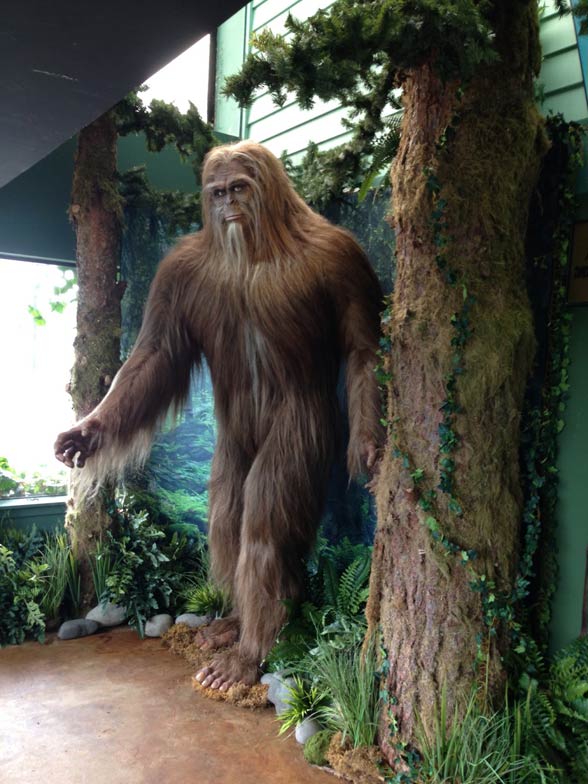
Explanations
Both the Bigfoot believers and non-believers admit that many reports on the sightings of this creature are hoaxes or wrong classification. However, hoaxes of this type are not very funny, and even tragic in consequences. Like, for example, an incident from 2012, when a man from Montana was hit by a car because he wanted to scare the drivers by walking in a “ghillie suit” – a camouflage clothing “decorated” with plants. The man looked like a strange forest creature from a distance, who would scare many people to death.
Another explanation for the origins of Bigfoot is the theory about the survival of Gigantopithecus – an enormous ape living in Asia from 9 million to 1000 thousand years ago. In the case of Bigfoot, the situation is a bit complicated, because until now the remains of Gigantopithecus haven’t been found in North America… Moreover, more and more scientists believe that Gigantopithecus wasn’t bipedal, because it was too heavy. It is also suspected that Bigfoot is a survived form of Meganthropus – a hominid whose remains were found in Indonesia. A tooth similar to the teeth of Meganthropus was found, however, in Santa Cruz (California).
Some scientists, including primatologist John R. Napier, posit that Bigfoot is a representative of an extinct hominid of the Paranthropus genus (almost human). However, this thesis is very difficult to confirm, because the remains of these hominids have been found only in Africa so far.

Does Bigfoot exist?
If you ask us, we have no doubts. Our colleague decided to look closer at this issue while visiting friends in the USA. When she asked about Bigfoot, they smiled and promised that they would show her Bigfoot during a trip to the mountains. Of course, she didn’t believe them. Who would, right?
She was very surprised when in the following morning they went to the mountains and, in the reserve, they visited… Bigfoot. In order to not be groundless, we publish one of the photos from this encounter. Bigfoot turned out to be an incredibly friendly creature, with a bit strange English accent, he told many interesting stories about his species, and he added that he loved selfies.
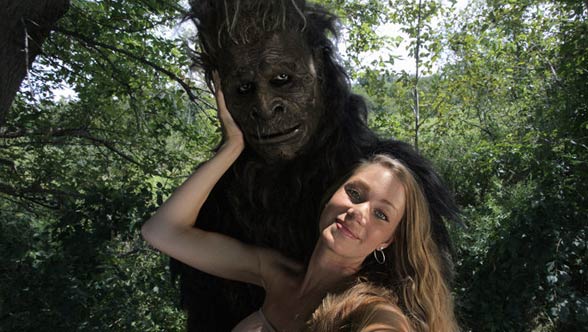
Detailed information / size
Bigfoot
- Height: 1,8-3 m (5.9-9.8 ft)
- Weight: 180-450 kg (397-992 lb)
- Foot length: 30-56 cm (11.8-22 in)
- Foot width: 12-28 cm (4.7-11 in)
- Heel width: 5-20 cm (1.9-7.8 in)
- Palm width: 15-22 cm (5.9-8.6 in)
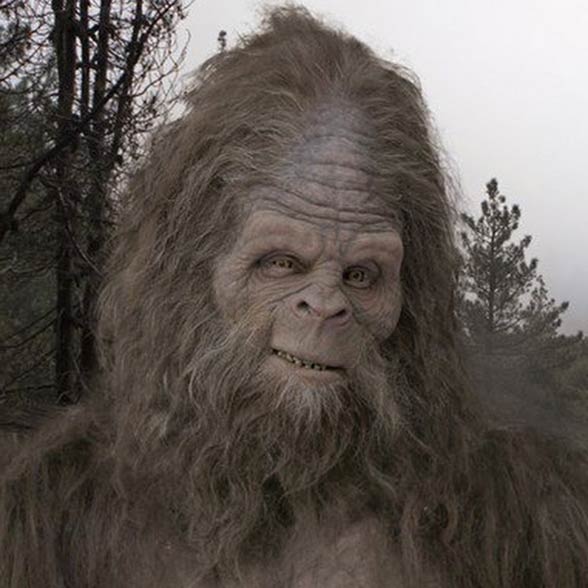
Bigfoot – interesting facts
The term sasquatch is an English form of the word sásq’ets from the Halkomelem language.
There are several organizations that study Bigfoot and its origins. BFRO (Bigfoot Field Researchers Organization) is the oldest and biggest one. It has a free database. Their website includes reports from the whole of North America, that have been examined by researchers in terms of credibility.
